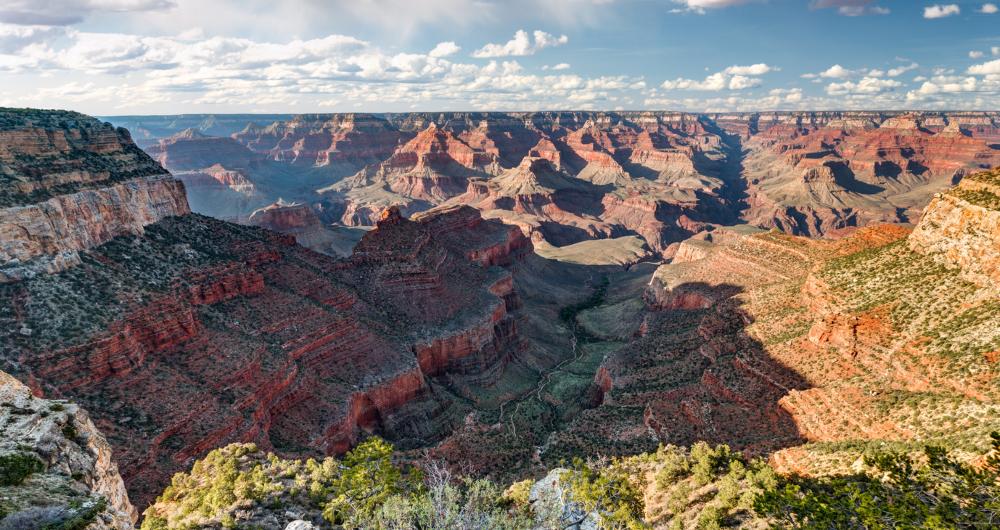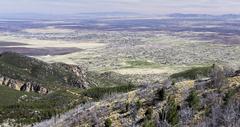A true natural wonder of the world, the Grand Canyon is one of the most famous sites in all of North America. Located in the state of Arizona, the Grand Canyon runs for 277 miles (446 km) in length along the Colorado River and has a maximum width of around 18 miles (29 km), as well as a maximum depth of just over a mile (6,093 feet / 1,857 m). Historically inhabited by Native Americans, who created many settlements among the canyon, the Grand Canyon has been seen as a holy site for some people and an inspiration to others.
Grand Canyon
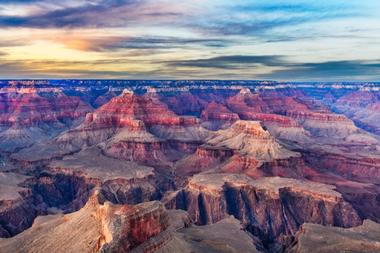
The Grand Canyon has an estimated age of between five and six million years and is one of the most visited natural sites in all of North America. The impressive beauty and overwhelming nature of the Grand Canyon have earned it a place as one of the world's must-see locations, with around five million visitors arriving at the Grand Canyon each year. Around 80% of those visitors are from the United States, but many more come from other countries all around the globe.
Elevation of the Grand Canyon
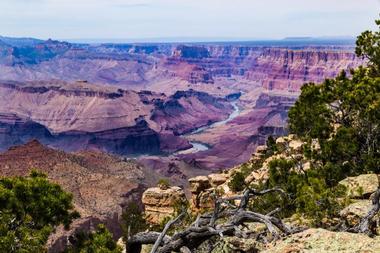
The elevation of a place is always a key geographical statistic to consider. Elevation tells us how high a location is when compared to the mean sea level of Earth. The elevation of the Grand Canyon can differ greatly in various parts as it is such a huge natural structure. The elevation of the Grand Canyon is commonly given as 2,600 feet (800 m), which is the approximate average elevation of the canyon's floor and the Colorado River.
Other parts of the Grand Canyon have vastly different elevations. The South Rim, for example, has an average elevation of 6,800 feet (2,072 m), while the North Rim has an average elevation of 8,000 feet (2,438 m). The highest point on the South Rim is Grandview Point, which has an elevation of 7,400 feet (2,255 m), while the highest point along the North Rim, which is also the highest point of the Grand Canyon overall, is Point Imperial, which has an elevation of 8,800 feet (2,682 m). Grand Canyon Village, located on the South Rim and housing a population of around 2,000 people, is the primary tourist hotspot of the Grand Canyon and has an elevation of 6,804 ft (2,074 m).
The vastly different elevations all around the Grand Canyon have a big impact on the local weather. The highest points have colder temperatures and can receive snowfall, for example, while the low areas down along the Colorado River tend to be warmer and drier. The average annual precipitation on the North Rim is much higher than the South Rim due partly to its higher elevation.
Visiting the Grand Canyon
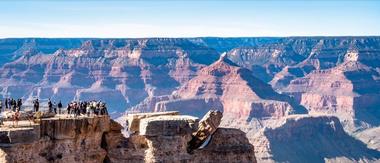
Millions of people visit the Grand Canyon each and every year, with the South Rim being open all year long and the North Rim being open until the first snowfall of the year. The Grand Canyon has an entrance fee of $20 for private vehicles and $10 for pedestrians or cyclists. Many commercial bus and shuttle tours also run to the Grand Canyon from major cities like Las Vegas. Various lodges and forms of accommodation can be reserved at the Grand Canyon, but it's vital to book rooms in advance as the area is very popular.
The South Rim tends to be the most-visited part of the Grand Canyon and all sorts of activities can be enjoyed at this location. The simplest way to enjoy the Grand Canyon is to observe it from above, snapping photos and appreciating the beauty of this natural wonder of the world from an area like Lipan Point, not far from Grand Canyon Village. If you want to take a more active look at the Grand Canyon, it's possible to hike own to the canyon floor, but due to the distance and difficulty of this hike, it can take a full day to get all the way down.
Various campgrounds can also be found around the North and South rims for people who want to spend more than one day at the Grand Canyon. Rafting, running, cycling, and other activities can also be enjoyed at the Grand Canyon, with helicopter tours also being a fascinating and exciting way to see it from a thoroughly unique angle. Due to the high elevation of the Grand Canyon, it’s important for visitors to wrap up warm and remember that the air is colder and thinner at high altitudes along the North and South rims.


